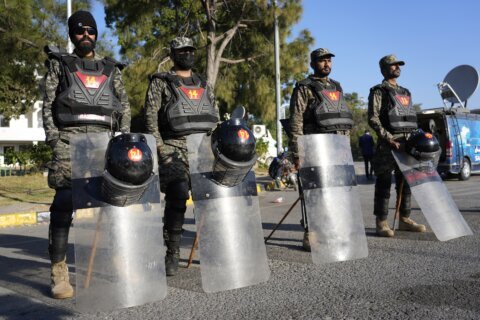In the fitness world, there’s a saying that the “best” type of exercise is the one you will do most often. Whether you’re beginning a new exercise program, returning after some time away or simply aiming to maintain your health and fitness as you age, finding something you enjoy is the key to long-term participation and success.
For most people, consistency is more important than intensity. The focus should be on building habits that reduce sedentary time and developing a physical activity routine that aligns with your goals and fits seamlessly into your lifestyle.
In short, find activities you enjoy and do them regularly. However, many people still want to know how to maximize their time in the gym.
[READ: Mind-Blowing Benefits of Exercise: Why Exercise Is Important]
Calorie-Burning Exercises
A common question asked of personal trainers and group fitness instructors is: “Which exercise burns the most calories?”
Knowing which exercises burn more calories can be especially relevant if your goal is weight loss, improving your fitness level or enhancing sports performance. However, it’s also important to think about the amount of time that you’re exercising for. Exercises that burn more calories will be higher intensity, so it’s likely that you’ll be able to perform them for a shorter length of time. Workouts like HIIT classes require you to spend time doing high-intensity activity while allowing you to recover during short breaks.
Given our busy schedules, it makes sense to want to make every workout count. However, it’s essential to remember that recovery is a crucial element of any exercise program. Vary the intensity of your workouts to avoid injury or burnout before reaching your goals.
[Read: Best Fitness Apps and Home Workouts.]
Exercise Intensity Levels
Physical activity can be classified as light-, moderate- or vigorous-intensity (also called high-intensity). These categories are often based on something called metabolic equivalents, or METs. A MET is roughly equivalent to the energy cost of sitting quietly, so if a physical activity is 3 METs, that means you’d be working three times harder than if you were sitting quietly.
— Light-intensity physical activity is defined as movement that is less than 3 METs.
— Moderate-intensity activity is between 3 and 5.9 METs.
— Vigorous-intensity activity is 6 METs and higher.
It’s important to note that the same type of physical activity can fit into any of those three categories, depending on how hard you’re working. For example, walking on a treadmill at about 2 miles per hour (mph) is a light-intensity activity (2 METs), while walking at 4 mph is a moderate-intensity activity (5 METs) and walking or hiking at a moderate pace on an incline is a vigorous-intensity activity (7 METs).
If walking is your chosen form of exercise, you can increase your intensity by speeding up, adding incline, or wearing a weighted vest or backpack. In fact, hiking on steep hills while wearing a backpack can increase the activity all the way up to 9 METs. To keep things interesting, vary your walking speeds and terrain to challenge your body in new ways.
[READ: The Best Home Exercise Equipment.]
Best Physical Activity for You
The 2024 Compendium of Physical Activities, which was recently published in the Journal of Sport and Health Science is a great resource to help you learn about the intensity of different activities. You can visit this website to explore the compendiums for adults, older adults and individuals who use wheelchairs. The adult compendium includes 22 major headings, ranging from walking and bicycling to occupational activities and playing video games, which highlights the fact that all movement matters and is beneficial.
Some of the highest-intensity activities in the publication included high-intensity bicycling and running, cross-country skiing and some types of virtual reality exercise.
There are three categories of physical activity intensity:
— Vigorous-intensity physical activities
— Moderate-intensity physical activities
— Low-intensity physical activities
Vigorous-intensity physical activities (over 6 METs)
— Home activities: Moving household items upstairs, carrying boxes or furniture
— Conditioning exercise: Circuit training with body-weight exercises
— Bicycling: Mountain biking
— Lawn and garden: Shoveling snow by hand with vigorous effort
— Sports: Competitive tennis
— Walking: General stair climbing
Moderate-intensity physical activities (3 to 5.9 METs)
— Home activities: Carrying groceries upstairs
— Conditioning exercise: Resistance training with multiple exercises
— Bicycling: Bicycling to work or for pleasure at less than 10 mph
— Lawn and garden: Laying sod
— Sports: Frisbee golf
— Walking: Climbing hills at a very slow pace, with no load
Low-intensity physical activities (under 3.0 METs)
— Home activities: Sweeping the floor, light effort
— Conditioning exercise: Pilates
— Lawn and garden: General gardening
— Sports: Playing catch (football or baseball)
— Walking: Bird watching with intermittent stops
How to Burn More Calories During Exercise
By understanding exercise intensity, you can strategically increase the number of calories burned during your workouts.
For example, if you are currently walking at 3.0 mph (3.3 METs), you can increase this from low to moderate intensity by upping your pace to 4.2 mph (6.5 METs), then to vigorous intensity by adding more speed plus an incline (4.5 mph/5% incline) (10.3 METs). These types of modifications can be applied to almost any type of physical activity, from yardwork to dancing to jogging.
If you’ve found an activity you love and that suits your lifestyle, keep doing it, but look for ways to challenge yourself by increasing the intensity. If you’re still searching, experiment with different activities at a low-to-moderate intensity, then gradually increase the intensity as you become more comfortable. You’ll likely find a lot of satisfaction and motivation when you see yourself improving your skills and becoming more fit.
More from U.S. News
Your Plant-Based Diet Needs These Foods for Optimal Health
Worst Foods to Eat for Gut Health and Digestion
Top Healthy Habits for Weight Loss, According to Dietitians
Exercises That Burn the Most Calories originally appeared on usnews.com







